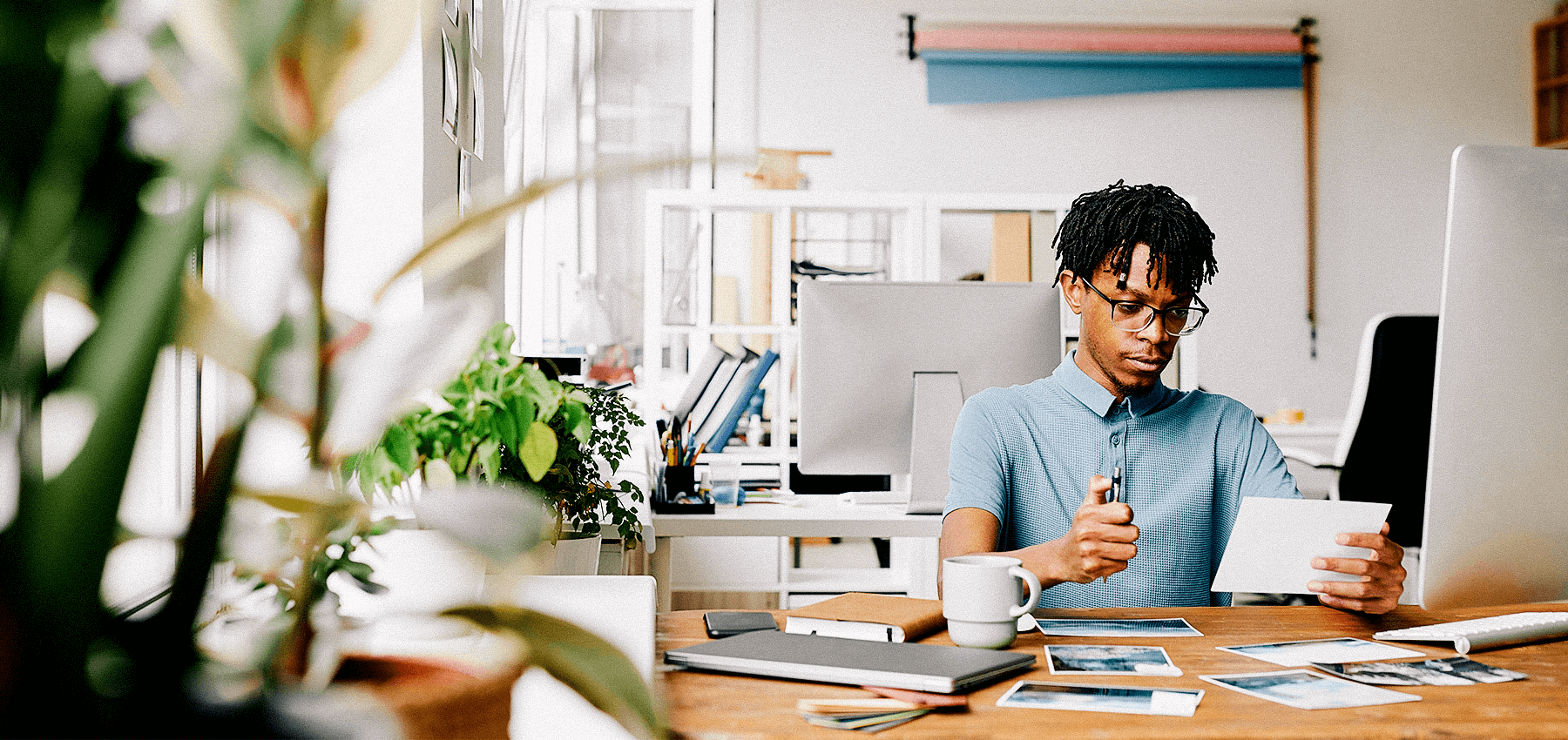You just wrapped up your first big job interview in Canada. Things went quite well, but there are still many steps to go, and the employer is likely still meeting other candidates. As the hiring manager shortlists candidates for the second and third rounds of interviews, your objective should be to stay top-of-mind as a candidate of choice.
Sending a thank you note is a great way to stay on the interviewer’s radar even after the interview. But as a newcomer to Canada, you may be unfamiliar with how thank you notes work and if they’re even necessary. Will you seem desperate for the job if you send one too soon? Will your thank you note even matter if it goes out too late? And how do you make sure your thank you note stands out?
In this article, we provide tips on how to write a post-interview thank you note that’ll help you stay top-of-mind with Canadian employers.
- What is an interview thank you note?
- Why should you send a thank you email after an interview?
- What to include in a post-interview thank you email
What is an interview thank you note?
An interview thank you note is an email or handwritten note you send to the interviewer/s after an interview. This note allows you to thank the interviewer for taking the time to speak with you and reiterate a few highlights from the interview. Your thank you note should be written in a formal, professional tone, and should ideally be sent within 24 hours of your interview.
Why should you send a thank you email after an interview?
While sending a thank you note is not mandatory, it is polite, and as a result, not sending one can actually count against you. Most HR managers and interviewers agree that a follow-up thank you is a deciding factor when it comes to choosing a suitable candidate for a job. In fact, it may be the very thing that puts you ahead of the competition.
A well-written thank you note can be a great way to remind the interviewer of the successful interview they did with you, even as they consider other candidates. Not only will a thank you note ensure you stay top-of-mind and look professional, it’s an excellent opportunity to solidify your connection with the interviewer/s and sell yourself. Have some relevant skills that didn’t come up during the interview? Mention them in your thank you note!
Don’t hesitate to include any points that resonated with you during the interview in your thank you note. Active listening is considered a valuable soft skill in most industries, and showing that you weren’t only getting your points across effectively but also listening to what the interview told you can count in your favour.
A thank you email is also an opportunity to reiterate your enthusiasm and interest in the position. If you forgot to ask some of the key questions you had for the interviewer, your thank you email is the perfect chance to get those questions in. Before you end your note, be sure to mention you’ll eagerly wait to hear back on the next steps.
What to include in a post-interview thank you email
A well-written thank you note should be brief and personalized. This means that you should send individual thank you notes to everyone involved in the interview process. But what does a good interview thank you email look like? Here are the key things your note should include:
- A subject line: Make sure it’s short and professional.
- A greeting: Address the interviewer by their first name at the start of your thank you note. Avoid salutations that aren’t commonly used in the Canadian workplace, like Mr., Mrs., or Ms. (professional salutations like Dr. or Prof. should still be used.)
- A formal thank you: The body of your email is where you express gratitude to the interviewer for taking the time to meet with you. Let them know that you appreciate the insights they shared and enjoyed the conversation.
- The position you interviewed for: Don’t assume that the interviewer will clearly remember you just because you remember them. In all likelihood, the interviewer is meeting multiple candidates each day, and may even be hiring for multiple positions on their team. You ideally want to remind them of the position you interviewed for and the date of your interview.
- A recap of some meeting highlights: Did the interviewer share some insights about the company’s future plans or culture? Did they talk about what your role will involve? Include some highlights of things you learnt during the interview to show that you were actively listening.
- Anything you missed during the interview: If you forgot to ask an important (impressive) question during the interview, or missed highlighting a skill or certification that in hindsight could be really valuable for the job, you can always add a line or two in your thank you note.
- Excitement about the next steps: Whether this was the first of multiple interview rounds or the final interview before the employer makes a hiring decision, you’re likely eager to hear if you made it to the next step. Let some of this eagerness show in your thank you note so the interviewer knows you’re really interested in the job.
- Your contact information: End the note with a polite sign off like “Best regards”. Send your thank you note using the email address you used to apply for the job (which should be the same email address listed on your resume). You can also include other contact information, such as your phone number and LinkedIn profile, in your signature.
What NOT to do in an interview thank you email
- Don’t send a group thank you note to a panel of interviewers: After a panel interview, each panel member provides their assessment of the candidate and, in most cases, they all play a role in the decision-making process. So, you want to maintain a personal connection with everyone who was involved in the interview, and individual personalized thank you notes are a great way to do that.
- Don’t spell the interviewer’s name wrong! This small error can undo your chances of landing your dream job.
- Don’t be too casual: A post-interview thank you note is a formal letter, so avoid including memes, emojis, or GIFs.
- Don’t be underconfident or overconfident: Even if you don’t think the interview went particularly well or, on the contrary, you’re absolutely certain that you’ve made it to the next round, don’t let your emotions get the best of you. Remember, the interviewer/s may not have made a decision yet, so don’t act as if you already know what’s going to happen.
- Don’t be pushy or impatient: One question you should never ask (or even imply) in your thank you note is “Did I get the job?” If you make it to the next interview round or qualify for a job offer, the interviewer will let you know once a decision has been made. Impatience can be annoying and it isn’t a personality trait you want to exhibit during the hiring process.
When to send a thank you email after an interview
When planning the ideal timing for your thank you note, you don’t want to seem too eager, but you also don’t want to get lost in a sea of candidates or appear forgetful. Worse still, you don’t want to pop into someone’s inbox with a thank you message after they’ve forgotten all about you.
Ideally, you should send a thank you email within 24 hours of your interview. Don’t be too hasty while writing this note; take a few minutes or hours to think about the highlights of your meeting and anything else you’d like to showcase. And don’t forget to proofread your thank you note before you hit send.
7 tips for writing a good post-interview thank you note
Here are some tips to keep in mind while writing a thank you note to your interviewer:
- Send your thank you note within 24 hours of the interview, while you’re still fresh in the interviewer’s mind. Since it is a professional email, be sure to send it during working hours. (This also ensures that your email doesn’t get lost in a sea of unread emails.)
- Send the note the same way the company contacted you for the interview. In most cases, this will be via email, but it could also be LinkedIn.
- Use an effective subject line. A vague subject like “Hello” or “Thank you” might result in your email landing in the recipient’s spam folder. Even if it does land in the inbox, the interviewer’s attention might not be immediately drawn to it. Ideally, the subject line you choose should specific, to-the-point, and catchy. “Great meeting you yesterday” or “Thank you for meeting me today” are good subject line options.
- Keep it brief. Make sure you get straight to the point and include only necessary information in your thank you note. Three to four short paragraphs is more than enough. The crisper your note is, the more likely it’s to make an impact or even be read.
- Use the right tone. If you’re following up after an interview with a large organization, it’s best to use a formal tone in your thank you note. On the other hand, if the company is a cool start-up with a relaxed company culture, a semi-formal tone might work.
- Proofread your note thoroughly. Typos and grammatical errors can draw attention away from the strengths of your application and cast doubt on your language skills and attention to detail. Always proofread your thank you note at least twice, and if needed, run it through a grammar checker software or request someone else to proofread it for you.
- Use a professional email address for interview-related correspondence. Don’t send a thank you email from an account you made on a whim when you were twelve years old. Ideally, your email address should include your first and last name, so the interviewer can clearly see who the note is from.
Post-interview thank you email examples
Still nervous about the idea of sending a thank you email? Here are some examples you can use for inspiration, although you’ll want to make sure to personalize your thank you note with details relevant to your own interview.
Thank you note: Example 1
Hello Alice,
Thank you again for taking the time to meet with me yesterday afternoon. I truly enjoyed getting to know more about the Marketing Lead position and the work you do at XYZ Marketing. I left our conversation feeling even more excited about the role.
I was especially happy to learn that you’re planning to pilot TikTok as a marketing channel. In my previous role, my team generated a lot of traction for our brand, both through owned and influencer-led TikTok content and I have several ideas that might work for XYZ.
I look forward to hearing about the next steps and hope we get the chance to work together soon.
Have a great afternoon,
Megha Sharma
(459)-0389-56
Thank you note: Example 2
Hello Vijay,
Thanks again for meeting with me yesterday afternoon to chat about the product designer role.
I strongly believe my experience leading design at XYZ Design, and in particular, my role in the development of product Z, will translate nicely to the work you do at ABC Design.
Following the interview, I’ve had some time to think about the design challenge you’re facing with product R, and am attaching a rough sketch that could potentially help you balance usability and aesthetics.
I’m excited to continue the conversation and look forward to hearing from you soon.
Best regards,
Mark Weber
When to follow up after your thank you note
When applying for your first job in Canada as a newcomer, it’s understandable that you’ll be eager to hear from the employer after an interview. That said, patience is key during the interview process, and being pushy can work against you.
Ideally, you should ask the interviewer/s for an estimated timeline of when they’ll have a decision for you during the interview itself. This will give you a better idea of when to follow up. For instance, if the interviewer says they’ll have a shortlist of candidates for the next interview round in a week, that’s likely when you want to follow up. However, if you did not ask or get a response to this question during the interview, it’s best to wait two weeks before following up.
The thank you note you sent earlier technically isn’t a follow up email. Unlike your thank you email, the purpose of a follow up note is to nudge the interviewer to share their decision with you.
The reason why follow up emails are important is because, in Canada, many employers don’t proactively inform candidates who’ve been eliminated from the hiring process. A timely follow up can bring you back to the forefront before a decision is made or can increase the chances of getting a clear picture of the outcome of an interview afterwards.





